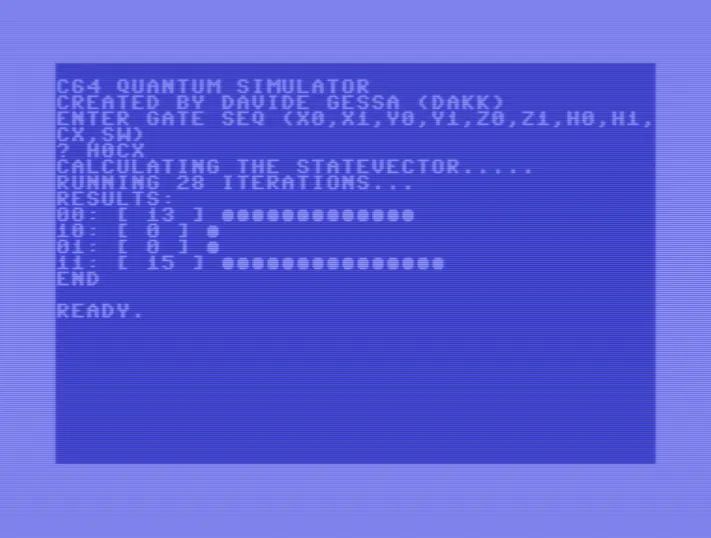The term ‘quantum computer’ gets usually tossed around in the context of hyper-advanced, state-of-the-art computing devices. But much as how a 19th century mechanical computer, a discrete computer created from individual transistors, and a human being are all computers, the important quantifier is how fast and accurate the system is at the task. This is demonstrated succinctly by [Davide ‘dakk’ Gessa] with 200 lines of BASIC code on a Commodore 64 (GitHub), implementing a range of quantum gates.
Much like a transistor in classical computing, the qubit forms the core of quantum computing, and we have known for a long time that a qubit can be simulated, even on something as mundane as an 8-bit MPU. Ergo [Davide]’s simulations of various quantum gates on a C64, ranging from Pauli-X, Pauli-Y, Pauli-Z, Hadamard, CNOT and SWAP, all using a two-qubit system running on a system that first saw the light of day in the early 1980s.
Naturally, the practical use of simulating a two-qubit system on a general-purpose MPU running at a blistering ~1 MHz is quite limited, but as a teaching tool it’s incredibly accessible and a fun way to introduce people to the world of quantum computing.















Line 103 should use a GOSUB instruction and not the GOTO instruction.
https://github.com/dakk/qc64/issues would probably be a better place to report things like that.
I was really hoping this was a C64 emulator running on a quantum computer so it was actually a quantum C64.
Well, if you have a quantum computer, you can run the emulation of a C64 emulating a quantum computer. More fun than effective.
Then it would be most likely C64, with some insignificant part of C128 and a smidge of Atari 800XL
The quantum computer that runs a C64 emulator already exists. We just haven’t reached the time where it exists yet.
:)
That would be badassery!
“Old, but not obsolete.” ;-)
Have the various AI assistants write their version(s) of the code and compare them. Should be interesting to see which is the most efficient and/or elegant.
JMP $FFD2
I had QuantumLink on my C64 in 1987! Good times.
I would like an Amiga 500+, with a quantum upgrade!
I wonder if the Quantum Furball in my A2000 still works. It hasn’t been powered up for about 15 years…
I have Spectrum 128k somewhere in the boxroom. :) I should find it . 30 years without power…
Did a ZX Spectrum version.
128K is too much. 16K should be enough for everyone.
Spectrum was 48k, no?
But really, any Sinclair quantum emulation should really be for the Sinclair QL (Quantum Leap).
https://en.wikipedia.org/wiki/Sinclair_QL
There were 16K, 48K, 128K and even more RAM models
Nice joke about QL!